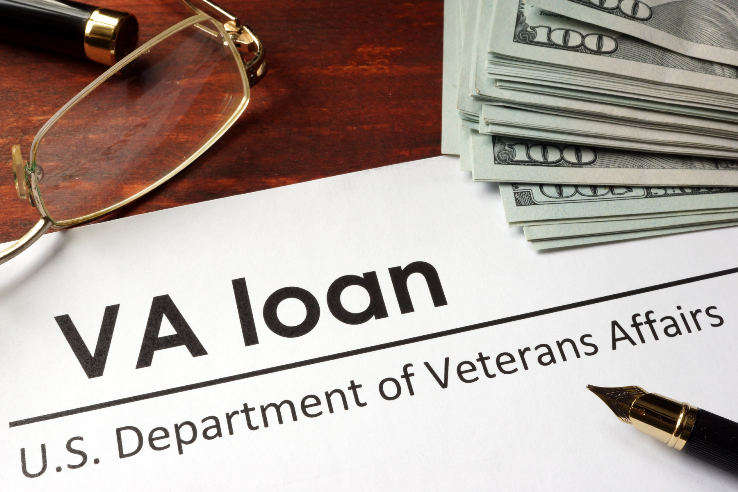
The recent Memorial Day holiday served as a reminder of all who have served our country — and continue to do so even as we celebrate the start of summer. Our country has always recognized that we owe a special debt of gratitude toward our veterans.
One of the best programs available to those who were honorably discharged from the military is the Veterans Administration mortgage loan program. It stands out as one of the few government mortgage programs that not only works well, but is a great deal for those who are eligible.
A VA mortgage loan requires no down payment and carries a low, 30-year fixed rate, currently slightly over 4.5 percent.
I know that caught your attention! There are some conditions to getting a VA loan, but millions of Americans who are eligible are not even aware of this good deal.
There is no age restriction on qualifying for a VA mortgage loan, and you can get a new loan even if you had one many years ago. The surviving spouses of veterans with benefits also qualify if they have not remarried. Plus, there are good VA loan deals for those seeking to refinance an existing loan.
Perhaps you, or someone you know, could qualify. Here are the basic requirements to get a VA loan:
• You must have been honorably discharged from the U.S. military.
• You must have a Certificate of Eligibility (available from the VA Eligibility Center at 888-244-6711).
• Your credit score must be above 640.
• You must be able to demonstrate steady income, or a two-year history of self-employment, or a stream of retirement benefits.
• Spousal income can help you qualify.
• Your total debt payments cannot be more than 41 percent of your total income.
• You cannot have any unpaid liens or judgments.
• You must wait until two years after a bankruptcy to apply and cannot have any subsequent late payments.
If you’re a vet with a higher rate or adjustable-rate mortgage, this is the time to lock in low fixed rates. It’s worth investigating.
You can qualify for VA home loan benefits no matter how long ago you were honorably discharged. And even if you took out a VA loan many years ago, you remain eligible for another VA loan if the first loan was paid off.
The VA loan program is not intended for speculators or investors. The property must be owner-occupied, although the loan can be used for single-family homes, condos, or one- to four-unit properties. And a VA loan can also cover a “jumbo” mortgage, making it an attractive alternative for higher priced homes.
The maximum amount of the full VA no-down payment mortgage loan is $417,000. However, if you purchase a more expensive home and need to borrow money above that amount, you must put down 25 percent of the amount above the $417,000 limit, and pay a slightly higher rate to get the larger mortgage.
So, for example, if you want to purchase a home below that limit, you get a no-down-payment mortgage for the entire amount at a fixed rate of around 4.625 percent for 30 years. The monthly payment on a $417,000 mortgage at 4.625 percent would be $2,144, plus property taxes and insurance.
If you wanted to purchase a $500,000 home, you must put down $20,750, which is 25 percent of the difference between $417,000 and the purchase price. The VA loan will cover the remaining $479,250, and your interest rate will be about a quarter percent higher (4.75-4.875 percent).
When you take out a VA loan, the closing costs (not more than $1,500) are rolled into the new mortgage. There is also a VA funding fee, typically 2.15 percent of the loan amount, also rolled into your loan. And you’ll pay $425 for an appraisal as you start the process, but you should not have any other out-of-pocket costs.
If you receive any service-related disability from the VA, however, they waive this fee altogether.
A VA loan can also be used to refinance your existing mortgage. In the case of a refinance, you can borrow up to 90 percent of the appraised value of the home, taking out cash to pay off other debts if there is equity available.
As with a new VA loan, you will have to pay $425 upfront for an appraisal, although there should be no other fees required to apply for the loan. For a refinance, the VA funding fee is 3.3 percent rolled into the loan. This applies if you convert a conventional mortgage to a VA mortgage. But if you are refinancing an existing VA mortgage, the funding fee is only one half of 1 percent.
Whether you are taking out a new-purchase loan or refinancing an existing loan, there is no monthly mortgage insurance (PMI), so payments are lower than comparable standard loans that require PMI when there is less than 20 percent equity in the deal.
The VA loan guarantee program has aided veterans since 1944. These loans have historically been a good deal for the government, as well. Statistically speaking, veterans just don’t default on their mortgages.
If you’re a veteran and you think you may benefit from utilizing your VA loan eligibility, then I suggest you contact the VA Regional Loan Center in St. Paul, Minn., at (800) 827-0611 to speak with a VA loan specialist.
In our current lending environment, credit has tightened everywhere. But the VA loan still offers vets the opportunity to purchase and refinance property with very attractive rates and programs. It’s a well-deserved thank you to our military. And that’s The Savage Truth.
This article was contributed by Terry Savage.
 Related Articles & Free Subscription
Related Articles & Free Subscription
How to Pay Your Bills Without a Paycheck
Like Finding Money You Didn’t Know You Had






Comment here